The third data release (DR3) contains 830 stellar spectra of 683 stars stars. The DR3 spectra are arm-combined to the full wavelength range of the X-shooter spectrograph, and both original and galactic dust exinction corrected spectra are available. It also covers most of the HR diagram with spectral types between O and M, as well as AGB stars.
Simple stellar population models based on the empirical X-shooter Spectral Library (XSL) from NUV to NIR wavelengths. The models span the metallicity range −2.2 < [Fe/H] < +0.2 and ages above 50 Myr.
The second data release (DR2) of XSL covers the full X-shooter range (UVB to NIR), but is arm-separated, and contains 813 observations of 666 stars. The first data release (DR1) contains UVB and VIS spectra for more than 200 stars.
OVERSTOCK BITCOIN7.33 USD IN BITCOINHOW MANY BITCOINS ARE STILL AVAILABLEADVANTANGES OF TOKENIZATION IN BITCOINCYKLICZNO艣膰 BITCOINA
50ENT BITCOIN0 054 BITCOIN
HOW TO BUY BITCOINS FROM CASH APP300 DOGE TO BITCOINHOW TO TRANSFER MONEY TO BITCOIN12K BITCOIN TO USD100 GH S BITCOIN MINER
BITCOINS MINED PER BLOCKACHAT BITCOIN MANDAT COMPTEUSE VISA GIFT CARD TO BUY BITCOINS
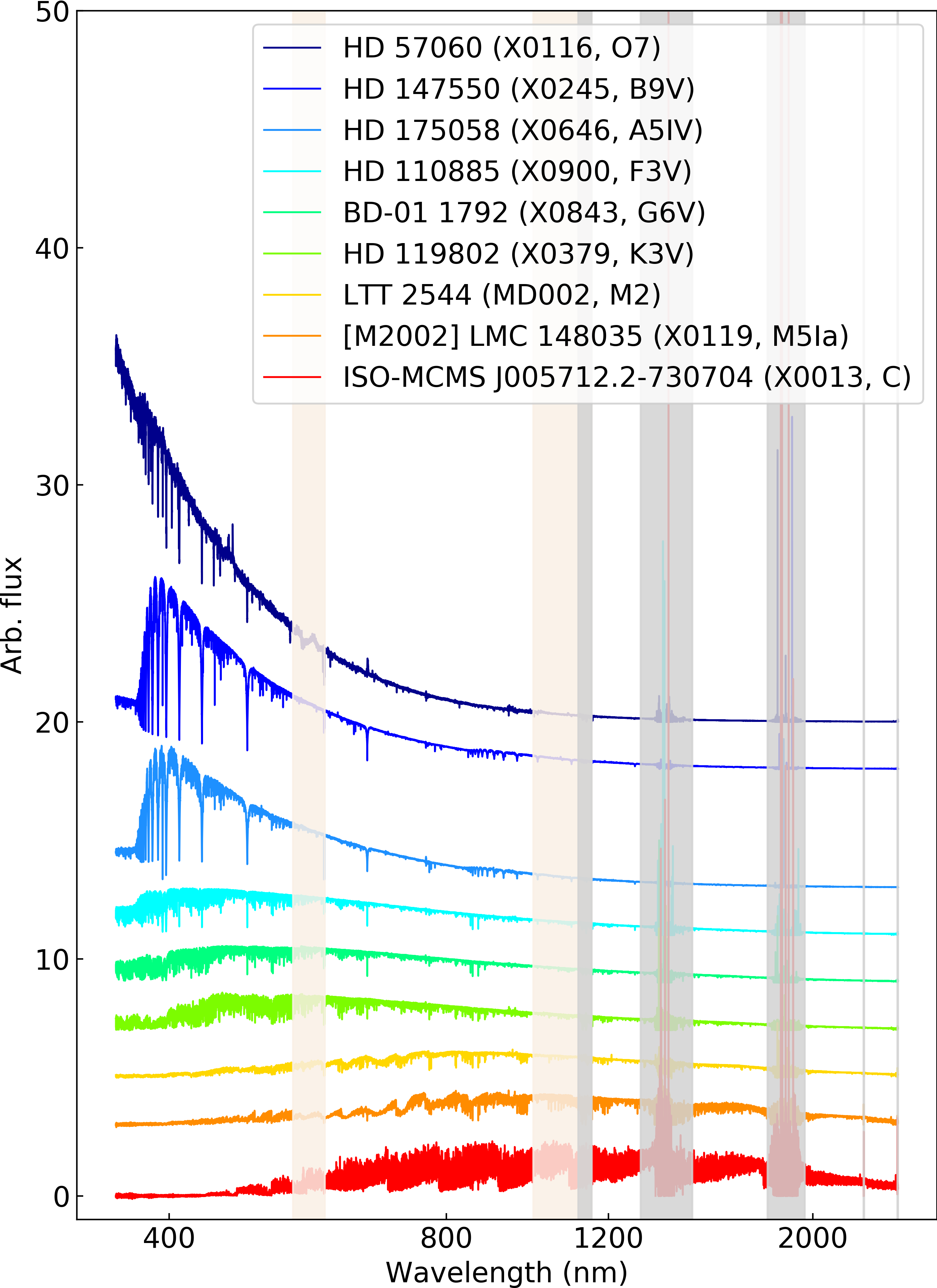
Figure 1: Typical XSL DR3 spectra in the OBAFGKMC sequence. Shaded bands mask the regions of dichroic contamination and deepest telluric regions.
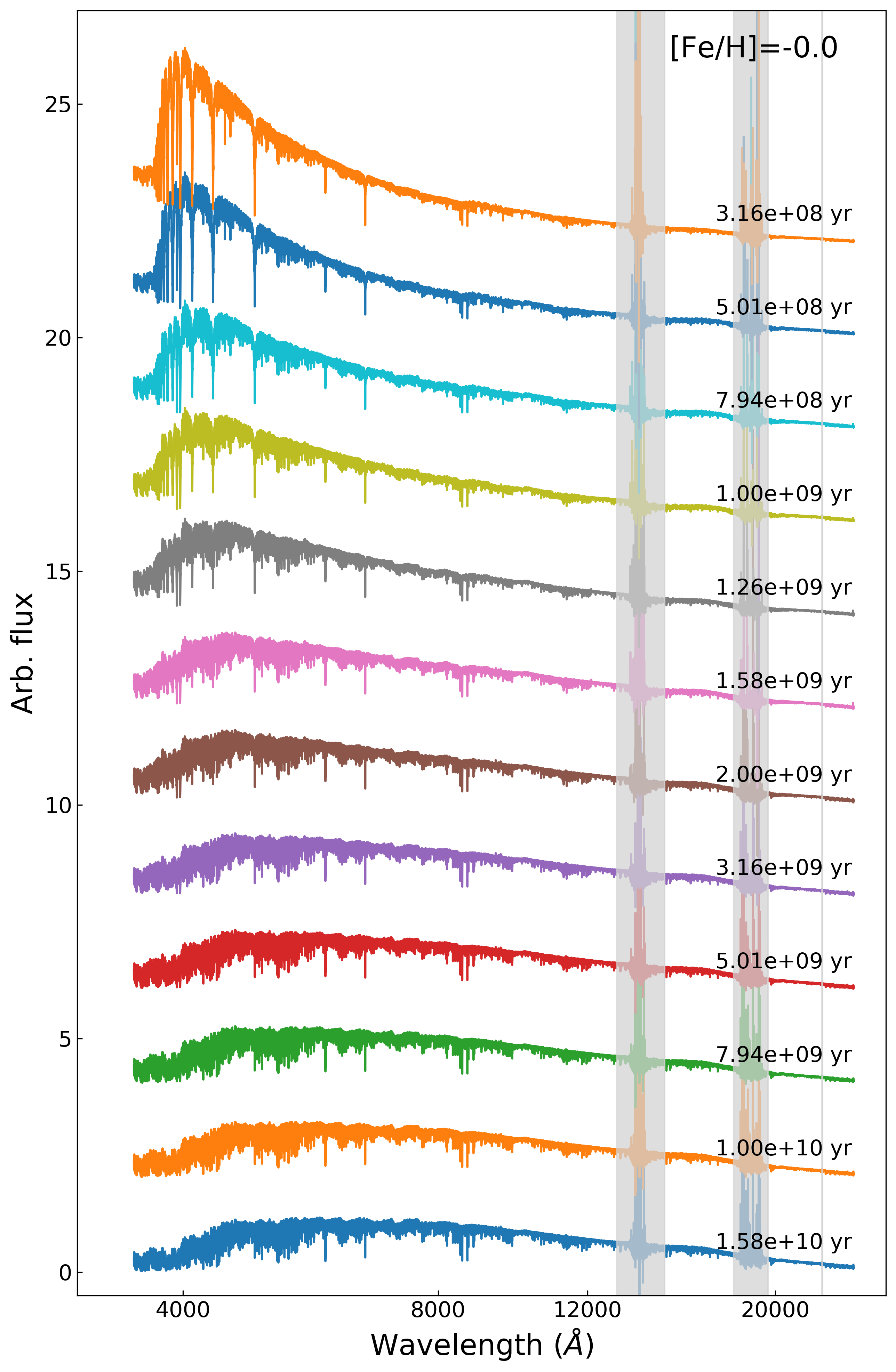
Figure 2: Examples of XSL simple stellar population models.
BITCOINS USESBITCOIN ETD6 BLOCKS BITCOINAPPS TO BUY BITCOINFUTURE BITCOINSHOW TO BUY BITCOIN IN CHINABITCOIN FEES ON CASH APP
2020 BITCOIN FIYAT谋ATENCION AL CLIENTE BITCOINATHENA BITCOIN VENEZUELA
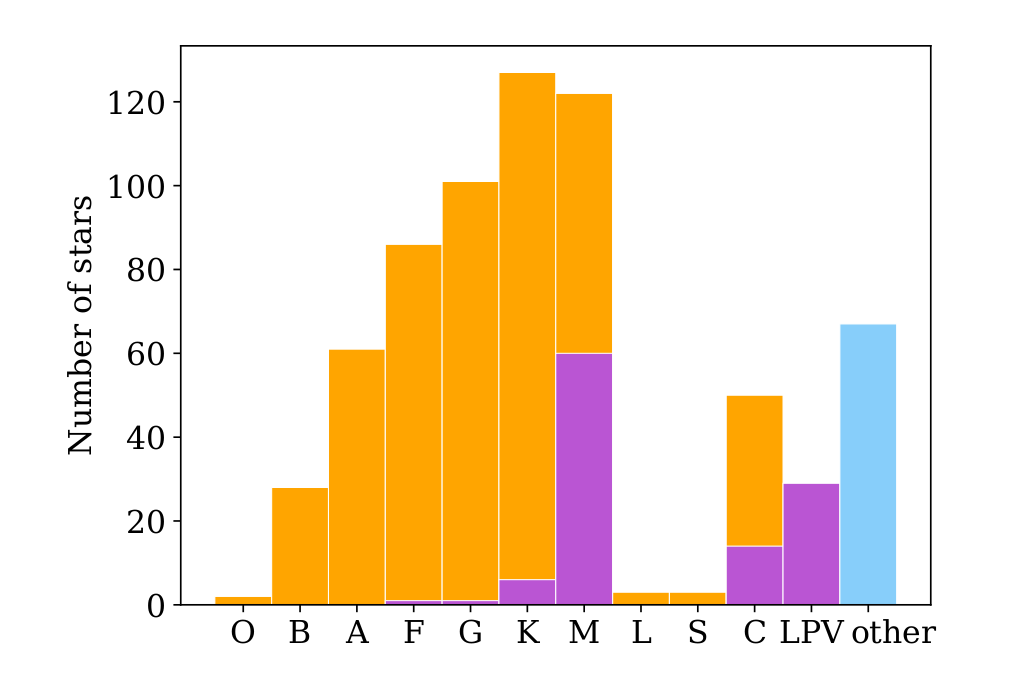
Figure 1: Distribution of the spectral types present in XSL, as retrieved from SIMBAD. We highlight the number of stars known as long period variable (LPV) objects in purple. The stars in the ‘LPV’ bin have no given spectral type but have object types labelling them as LPV objects. The stars in the blue bin ‘other’ do not have spectral types in SIMBAD, nor have object types which label them as LPV objects.
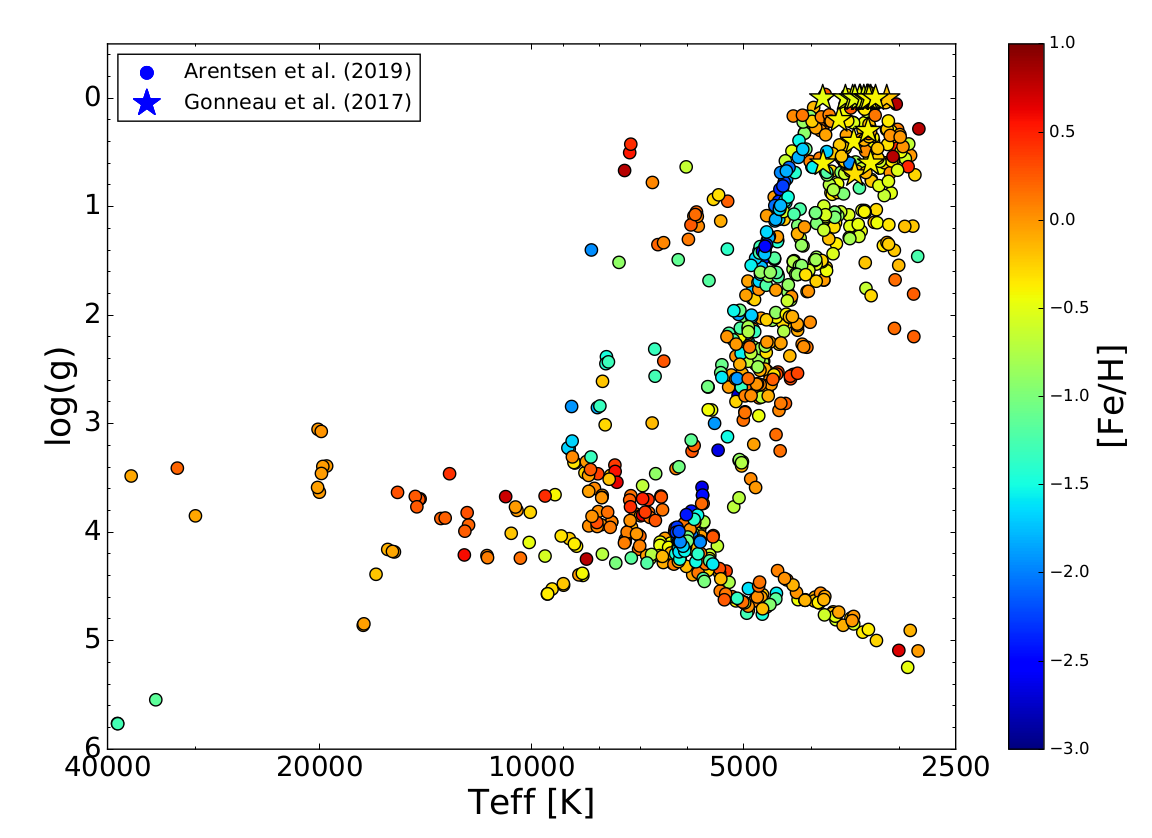
Figure 2: Stellar atmospheric parameters, calculated by Arentsen et al. (2019) (open symbols) and Gonneau et al. (2017) (star symbols), for 769 XSL spectra.
BITCOIN CONVENTION JULY 2024ADVANCED BITCOIN SIMULATOR WALKTHROUGHWHAT ARE THE NEW BITCOIN ETFSDO BITCOINS HAVE VALUEWHEN DOES TRUMP SPEAK AT THE BITCOIN CONVENTION
BITCOIN MINING INVESTMENTBITCOIN PRICES 2014CAN CASH APP CONVERT BITCOIN TO USD
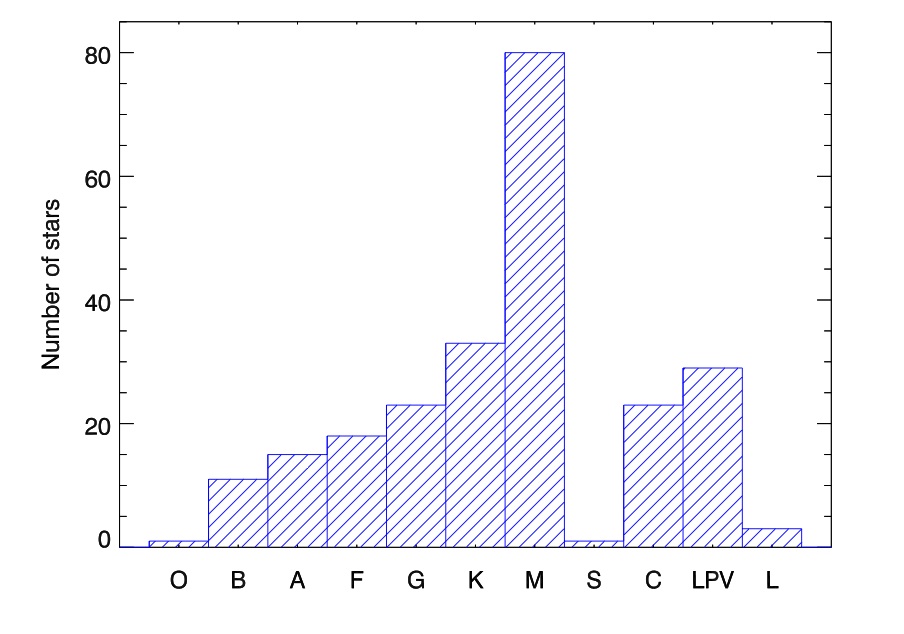
Figure 1: Distribution of the spectral types in XSL observed in Periods 84 and 85 (excluding telluric calibrators). Spectral types were retrieved from SIMBAD or based on educated guesses from the source libraries or atmospheric parameters.
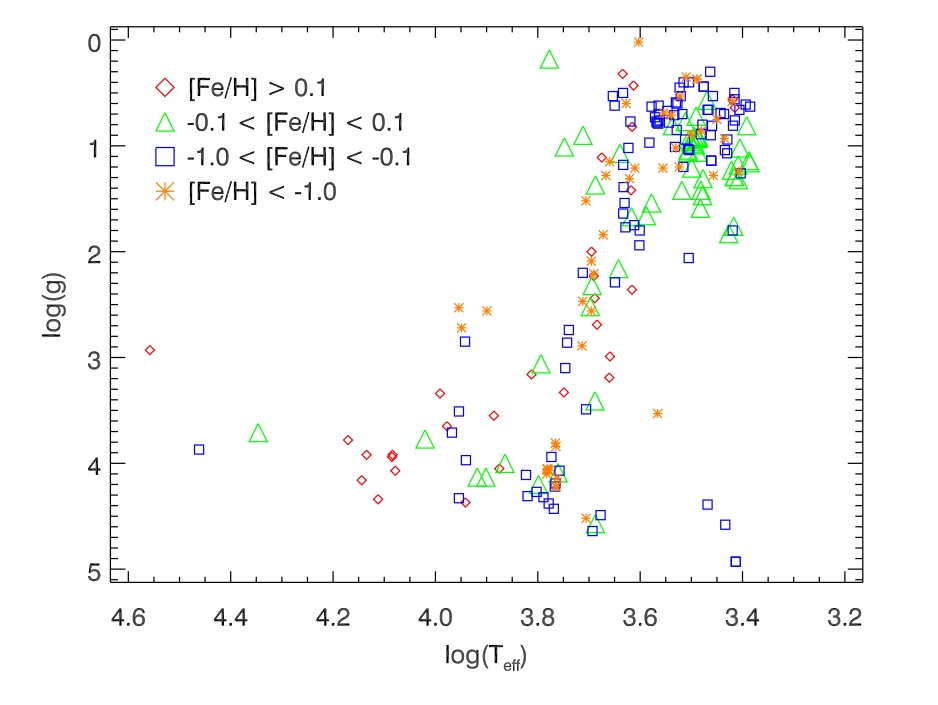
Figure 2: HR diagram of the 219 XSL stars (O–M, LPV, S) with calculated Teff, logg, and [Fe/H], where [Fe/H] is presented in different colors.